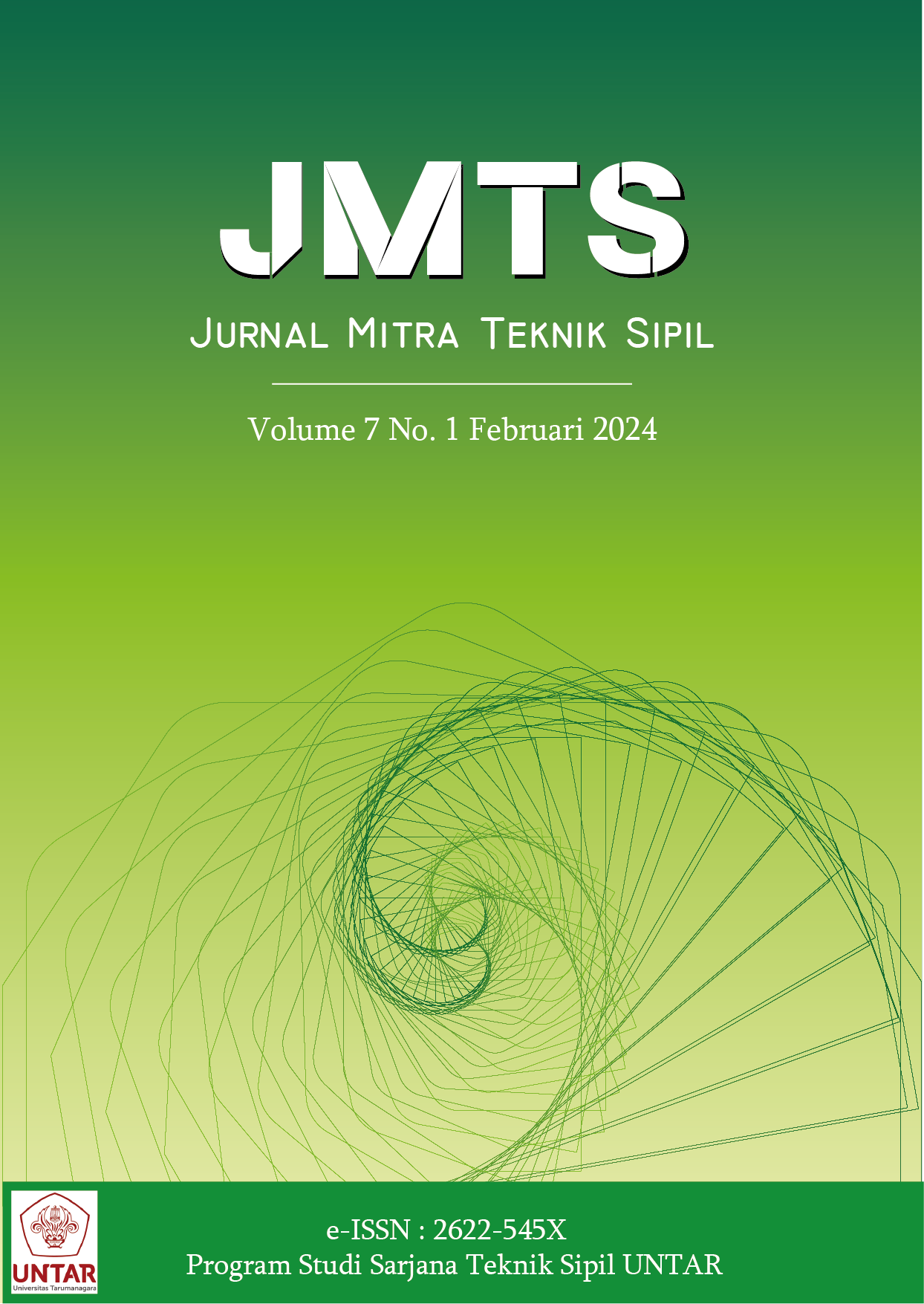ANALISIS PENGGUNAAN PROGRAM SOLVER UNTUK OPTIMASI PEMOTONGAN BESI PADA PROYEK RUMAH TINGGAL X
Main Article Content
Abstract
Steel reinforcement bar has an important role in the construction industry. In the construction process, the emergence of inefficient steel waste can lead to a waste of costs. One common cause of steel waste is steel cutting that is not optimal in the field, so a way is needed to minimize this waste. The Linear Programming method has been identified as one of the ways to reduce iron waste. This study aims to compare the remaining steel waste from cutting in the field with the remaining steel waste after using the Linear Programming method. To calculate steel waste based on the Linear Programming model, the Solver program is used. The house construction project in Manado is the object of this research. This study uses two signs, namely ≥ and =, as limits on the objective function. The use of the ≥ sign results in a demand for steel that exceeds the supply in the field, but with the least amount of iron waste. Meanwhile, the use of the = sign obtains minimal iron requirements, but with a greater amount of iron waste than the ≥ sign. This study also uses two approaches in calculating the percentage of savings, which are based on the diameter of each type of work and based on combining the diameters of sloof, beam and column work. The results showed a savings of 9% for the diameter-based approach for each type of work, and a savings of 9.1% for the diameter-based approach for sloof, beam, and column work.
Abstrak
Material besi memiliki peran penting pada saat pembangunan konstruksi. Pada proses pembangunan, waste besi yang tidak efisien dapat menyebabkan pemborosan biaya. Salah satu penyebab terjadinya waste besi yaitu pada saat melakukan pemotongan besi yang tidak optimal di lapangan, sehingga dibutuhkan cara agar dapat meminimalisir waste tersebut. Metode Linear Programming telah diidentifikasi sebagai satu diantara cara menurunkan waste besi. Penelitian ini bertujuan untuk membandingkan sisa waste besi dari pemotongan di lapangan dengan sisa waste besi setelah menggunakan metode Linear Programming. Salah satu cara menghasilkan nilai waste besi dari model Linear Programming yaitu dengan menggunakan program Solver. Proyek pembangunan rumah tinggal x di Manado menjadi objek penelitian ini. Penelitian ini menggunakan dua tanda yaitu ≥ dan = sebagai batasan pada fungsi tujuan. Penggunaan tanda ≥ menghasilkan kebutuhan besi yang lebih besar dari lapangan, namun menghasilkan waste besi yang terkecil. Sedangkan penggunaan tanda = memperoleh kebutuhan besi yang minimal, tetapi dengan jumlah waste besi yang lebih besar daripada tanda ≥. Penelitian ini juga menggunakan dua pendekatan dalam menghitung persentase penghematan, yaitu berdasarkan diameter pada setiap jenis pekerjaan dan berdasarkan penggabungan diameter dari pekerjaan sloof, balok, dan kolom. Hasil penelitian menunjukkan penghematan sebesar 9% untuk pendekatan berdasarkan diameter pada setiap jenis pekerjaan, dan penghematan sebesar 9,1% untuk pendekatan berdasarkan penggabungan diameter dari pekerjaan sloof, balok, dan kolom.
Article Details
Section

This work is licensed under a Creative Commons Attribution-NonCommercial-ShareAlike 4.0 International License.
This work is licensed under Jurnal Mitra Teknik Sipil (JMTS) Creative Commons Attribution-ShareAlike 4.0 International License.References
Abuhassan, I. A., & Nasereddin, H. H. (2011). Cutting stock problem: Solution behaviors. International Journal of Recent Research, 6(4), 429-433.
Formoso, C. T., Soibelman, L., De Cesare, C., & Isatto, E. L. (2002). Material waste in building industry: main causes and prevention. Journal of construction engineering and management, 128(4), 316-325.
Kork, M. A. N. (2013). Perhitungan kebutuhan tulangan besi dengan memperhitungkan optimasi waste besi pada pekerjaan balok dengan program microsoft excel. [Skripsi, Universitas Negeri Sebelas Maret]. https://digilib.uns.ac.id/dokumen/detail/46323
Nugraha, P. (1985). Manajemen Proyek Konstruksi 1. Surabaya: Kartika Yudha.
Siswanto. (2007). Tugas Operasi Riset Linear Programming. Universitas Mahasaraswati Denpasar.
Stapleton, D. M., Hanna, J. B., & Markussen, D. (2003). Marketing strategy optimization: Using linear programming to establish an optimal marketing mixture. American Business Review, 21(2), 54.
Tam, V. W. (2008). On the effectiveness in implementing a waste-management-plan method in construction. Waste management, 28(6), 1072-1080.

